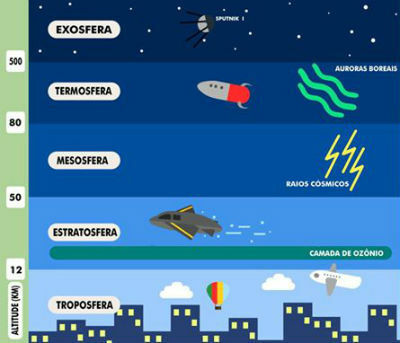What is summer?
Summer is one of the four seasons of the year that begins after spring and ends with the arrival of autumn.
It is marked by rising temperatures and remains for 3 months (from late December to late March).
In Brazil, the summer starts in December 21st or 22nd and ends on March 20th or 21st.
In many countries, summer is the period of school holidays and the time when the beaches are crowded.
The main features of the summer
- Increased temperatures;
- Occurrence of rains are usually quick, but with strong intensity;
- Longer days;
- Shorter nights.
The difference in the length of days and nights is because a part of planet Earth is closer to the Sun.
The beginning of summer starts with the summer solstice
The summer solstice marks the beginning of the season. At this moment, one of the Earth's hemispheres is tilted towards the Sun, receiving a greater amount of sunlight.
This inclination is relative to latitude, from the Equator Line. Thus, the further away from the Equator, the greater the incidence of sunlight.

While one of the hemispheres meets the summer solstice, the opposite hemisphere passes through the Winter Solstice. For example, while it is summer in the southern hemisphere, at the same time it is winter in the northern hemisphere.
The solstice and equinox happen because of the Earth's rotation and translation movements.
Learn more about Summer Solstice.
Summer in the Northern and Southern Hemispheres
In the terrestrial hemispheres, the seasons happen at different times, and the dates are:
- North hemisphere: Also called northern summer, summer starts on June 20th or 21st and runs until September 22nd or 23rd.
- South hemisphere: Also called austral summer, summer starts on December 21st or 22nd and ends on March 20th or 21st.
What is daylight saving time?
Daylight saving time is characterized by advance of hours according to the local time zone and currently around 30 countries use it.
As the days are longer in this season of the year, the purpose of this attitude is to take advantage of sunlight, since the sun rises earlier.
Thus, daylight saving time is closely related to electricity saving. This is because it avoids overloading energy consumption, especially in the so-called “Peak Time”, between 6pm and 9pm.
Daylight saving time was proposed in 1784 by diplomat and leader of the American Revolution, Benjamin Franklin (1706-1790).
At a time when electric light did not exist, the researcher proposed such a measure in order to make more use of the light coming from the sun.
Despite Benjamin Franklin's observations and research, the method was only adopted in the 20th century, during the first world war. Germany was the first country to implement it as a way to save coal.
Daylight Saving Time in Brazil
In 2019, daylight saving time in Brazil was suspended by Jair Bolsonaro. In 2020, this measure continues and, therefore, Brazil will not advance the clocks either.
The president argued that changes in the habits of Brazilians caused energy consumption to increase significantly in the afternoon, so that the The change in time is meaningless, as its purpose is precisely to reduce energy in the "peak time", which used to occur in the early evening.
Adopted in the 1930s, this timetable had been used effectively since 1985 in the Brazilian states, with the exception of those in the North and Northeast regions.
At that time, the clock was advanced by 1 hour in Brazil. The 1st Sunday of November, at midnight, marked the beginning of daylight saving time, remaining until the 3rd Sunday of February of the following year.
Curiosities about the seasons
- The word "summer" comes from the Latin veranum tempus, which means “spring time or time of fruiting”, thus being related to the closing of spring.
- In the past, there were five seasons of the year. Summer was divided into two moments: the summer itself, characterized by a hot and rainy climate, and the summer, characterized by a hot and dry climate.
Learn about the other seasons of the year:
- Winter
- Spring
- Autumn
- Seasons


